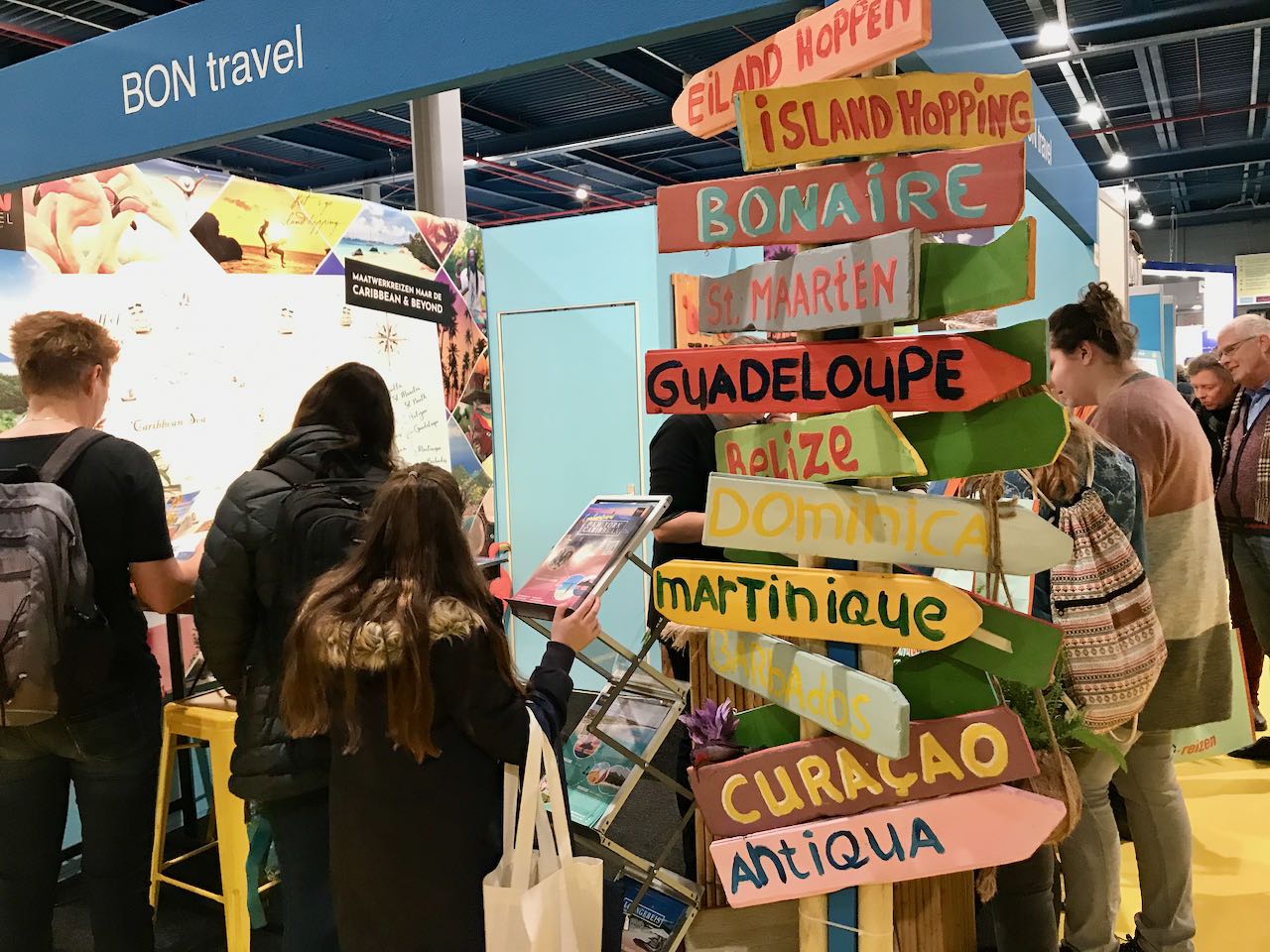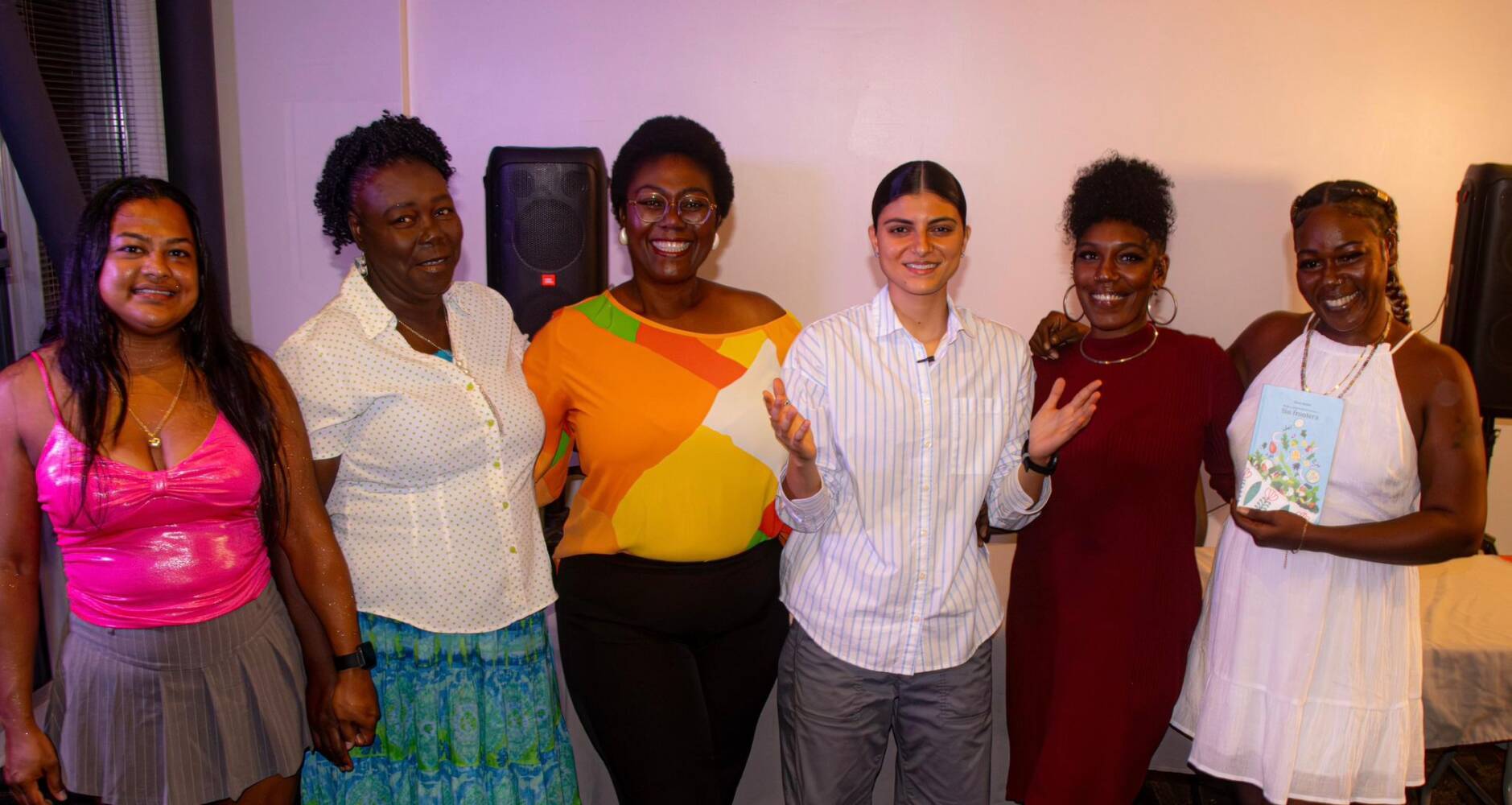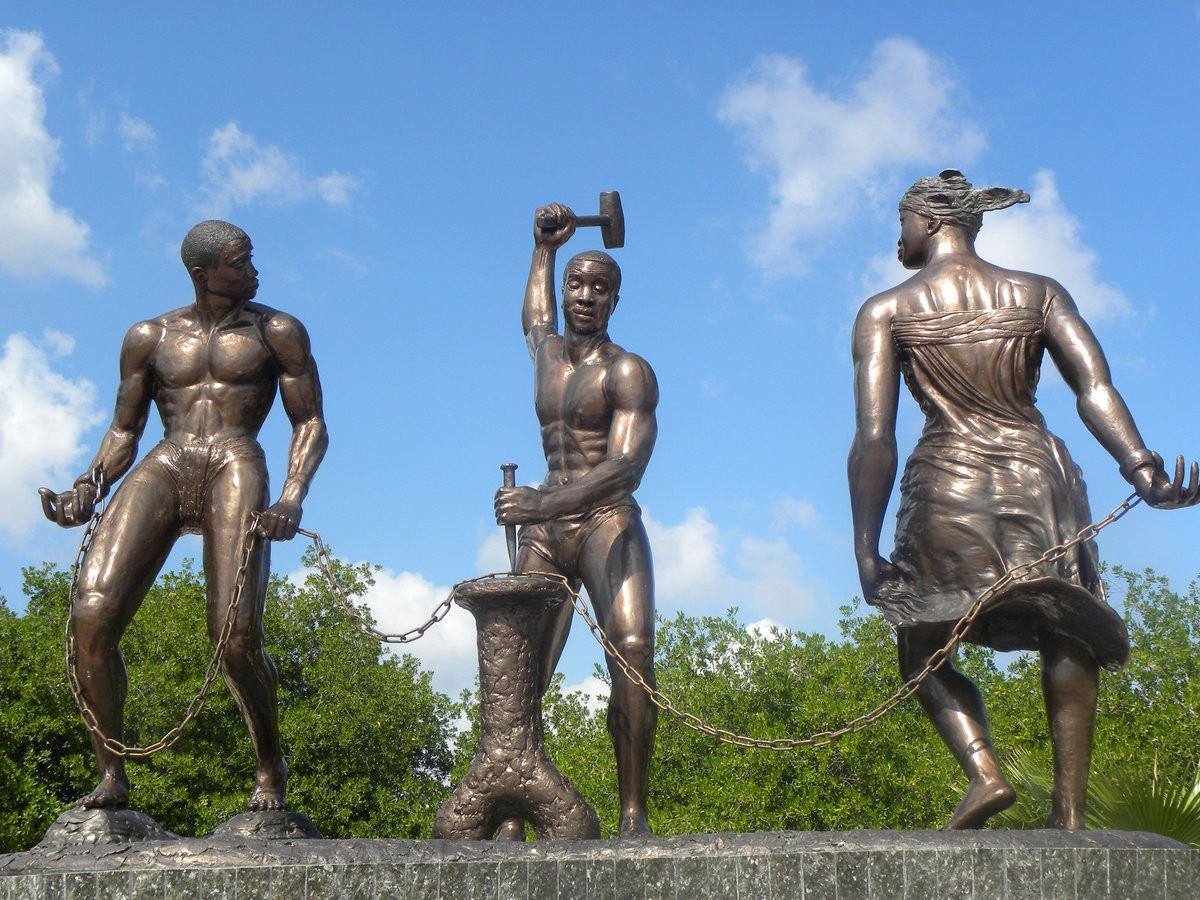UTRECHT – The Caribbean islands are still very popular with tourists. The islands – except for Aruba and Statia – were extreme well represented at the Vakantiebeurs (vacation fair) in Utrecht last week. But how do the islands deal with phenomena such as flight shame and the growth in demand for ecotourism and sustainable experiences?
Visitors to the fair in Utrecht stop by the Caribbean stands mostly because they are looking for a sunny vacation. But a growing number of tourists want something more. “The children have left the nest and we don’t necessarily have to bake in the sun for days on end”, says a woman who’s visiting the fair with her husband. The couple is looking for an experience. Hiking, learning something, being useful, immersing themselves into the community. That’s what they want.
But how do you follow these trends as an island when you’re still recovering from a hurricane? This is a challenge for Sint Maarten. This island was destroyed by hurricane Irma in 2017.
Video in Dutch with English subtitles
Report by Sam Jones
Cleaning up the reefs
And contributing something to the country that you’re visiting while on vacation? These types of vacations are also offered on the islands but it’s like searching for a needle in a haystack. On Bonaire for example, you can help keep the reefs clean. “We can give people a course to help restore the reefs”, says Eline Herder from Bon Travel proudly. “You can join a ‘pickup dive’ and help clean up the reef a bit. Containers filled with plastic are returned to the surface.”
A different subject used for advertisement nowadays is solar energy. “As you can see, we have solar panels” says Wendy Sambach with pride. She points to a poster of the Hillside Apartments Bonaire. “We ask our guests to turn down their AC when it’s cooler.” A visitor of the fair nods in agreement. “They also separate their trash so the plastic doesn’t end up in the ocean.”
Sailing instead of flying
No one at the Caribbean stands had an answer for flight shame (the shame one feels when they fly because they damage the environment due to CO2 emissions).
“You can be on Saba with the ferry within one and a half hours”, jokes Glenn Holm from the Saba Tourist Bureau. “But you have to fly to Sint Maarten first.”
According to Holm, Saba is the most sustainable island. “We are pure nature. We have a rainforest and we don’t want mass tourism.” About 25 percent of Saba’s inhabitants rely on tourism.
Less meat and more variation
Flight shame could be compensated with more attention to the environment, using less power, eating less meat, and more vegetables. Most vacationers can see themselves doing that. “I don’t have to go vegan”, says a girl who’s getting informed at one fifteen stands representing Curaçao. “I want to know if they have more variation in their meals.”
With the popularity of barbecue, spareribs, and hamburgers the islands may be the wrong choice. But according to Muryad de Bruin from the Curaçao Tourist Board, they are embracing the vegan trend. “It’s not a problem. We’ve been busy with vegan and organic food for a while.”
The Caribbean relies on tourism for nearly eighty percent of its income. Almost forty percent of the tourists come from the Netherlands. The group of people who wish to eat vegan or organic food keeps on growing according to De Bruin. “Americans also ask this question.” So it benefits the islands to follow these developments. Sustainability isn’t just a trend for the islands but a requirement.








